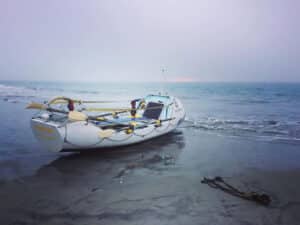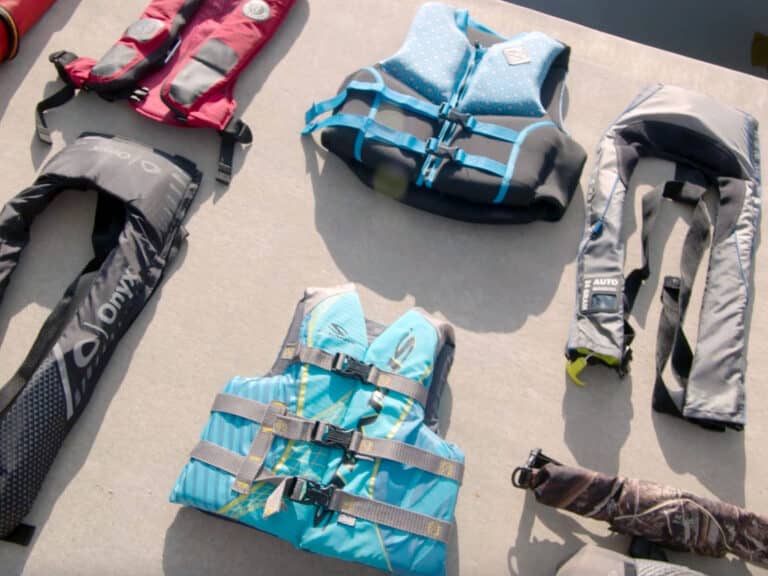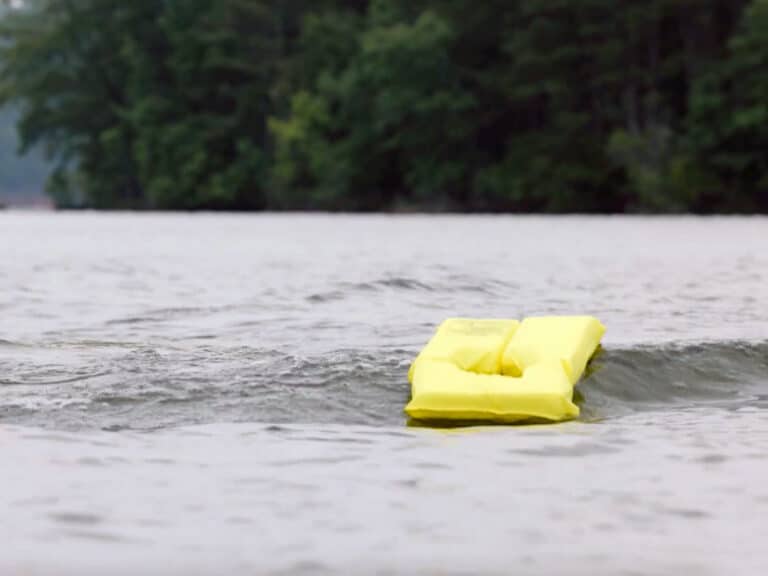
You’re suddenly in the water—fallen or knocked overboard, or left by a sinking boat—and thankful you were wearing your life jacket and that it’s keeping you afloat and (if you’ve purchased the right one) upright.
But now you’re like the dog that has finally caught the car he’s been chasing: What are you going to do?
The answer is clearer and more satisfying if you’ve added a few items of additional safety gear to your life jacket.
Even a brightly colored life jacket can’t be seen at night unless a light is shone directly on it. Day or night, you and the jacket are low to the water, hard to spot. And that’s if your plight is known—if someone is aware that you need rescue.
That’s why, even though not required for US Coast Guard approval, some of the best inherently buoyant life jackets come with pockets. Many have loops and rings ready for add-ons. Pouches, pockets and rings can be attached to inflatable life jackets too, while some top-line models have pockets as well.
Besides all its other potential uses, a waterproof flashlight can get plenty of attention, particularly if a boat or aircraft is looking for you. Low-tech, maybe, but low-cost too, and easy to stash in a life jacket pocket.
Similarly simple is a signal mirror, although using one takes a bit of practice. But as any house cat can tell you, a mirror’s reflection is hard to ignore.
A good whistle is cheap, rugged and compact; maybe that’s why so many top life jackets come with one already stashed in a pocket.
A step up the attention-grabbing scale is a strobe light, manually or water-activated, attached to the life jacket by clip, Velcro or lanyard.
A personal locator beacon is likely the surest way to summon help. If your budget doesn’t allow for one, at least consider a handheld marine radio, or a waterproof case for your cellphone. You pocketed life jacket will accommodate any of them.
Note that while our premise put you in the water alone, all these can be mighty helpful if you’re following the ironclad advice to stay with the boat if you can.
Should the fates lead you to shore, you might be able to both signal and stay warm, if you’ve packed a fire-starting kit in your vest, and learned how to use it before you need it.
Think about other hard spots in which you might find yourself—on, if not necessarily in, the water—and stock your vest to help deal with them. On blood thinners? Clotting devices and materials could be a lifesaver. Ditto an EpiPen or other treatment for a life-threatening food or insect allergy. History of heart trouble? Nitro or simple aspirin in a waterproof container in your vest could make it a life preserver in a different sense. Put the “personal” in what were once called personal flotation devices.
There are many ways beyond flotation, you see, in which your life jacket can become your best friend. You have a vested interest in what you stash in its pockets.
The U.S. Coast Guard is asking all boat owners and operators to help reduce fatalities, injuries, property damage, and associated healthcare costs related to recreational boating accidents by taking personal responsibility for their own safety and the safety of their passengers. Essential steps include: wearing a life jacket at all times and requiring passengers to do the same; never boating under the influence (BUI); successfully completing a boating safety course; and getting a Vessel Safety Check (VSC) annually from local U.S. Coast Guard Auxiliary, United States Power Squadrons®, or your state boating agency’s Vessel Examiners. The U.S. Coast Guard reminds all boaters to “Boat Responsibly!” For more tips on boating safety, visit www.uscgboating.org.








